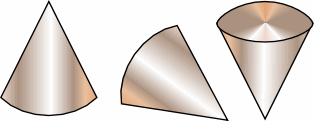| # | Title | Image | Description | Video |
| 1 | Map of State |
Finding Center of Gravity
|
Hang map of your state on a peg through the desired hole. Hang a plumb bob in front. Mark plump line with marker. Repeat with other holes. Where the lines cross is the center of gravity. |
|
| 2 | Tower of Lire |
Exceeding Center of Gravity
|
A set of eight blocks or books is stacked so the top block is completely over the edge of the table. Step lengths go as L/2n. |
|
| 3 | Bowling Ball Stability |
Stable, Unstable, and Neutral Equilibrium
|
A bowling ball is placed in, on, and along side a large Plexiglas hemisphere. |
|
| 4 | Balance the Cone |
Stable, Unstable, and Neutral Equilibrium
|
A cone can show stable, unstable, and neutral equilibrium; a sphere shows only neutral equilibrium. |
|
| 5 | Suspended Block |
Resolution of Forces
|
The sides of the triangle are in the ration of 3:4:5. The 1500g block rests on a stop which can be removed after the force parallel to the incline is balanced. The block will be suspended in the same configuration as when on the incline. The masses to balance the perpendicular and parallel forces are 1200g and 900g, respectively. |
Video |
| 6 | Rope and Three Students |
Resolution of Forces
|
A single student can easily deflect a rope held very taut by two other students. |
|
| 7 | Grip Bar |
Static Torque
|
A 1kg mass can be suspended from a bar at different places. The further from the handle grip, the harder it is to keep the stick level or to rotate the stick upwards. |
Video |
| 8 | Torque Beam |
Static Torque
|
Different combinations of mass at different distances from the pivot can be used to show torques in equilibrium. Distances from the pivot are integer multiples: r, 2r, 3r, 4r. Individual masses are identical. |
|
| 9 | Ladder Against a Wall |
Dynamic Torque
|
A model ladder leans against a heavy wooden box and a mass is hung from a rung. Move the mass higher and higher or adjust the angle smaller and smaller until the ladder slips. Different materials can be used for the surfaces to show different static frictions. |
|
| 10 | Walking the Spool |
Dynamic Torque
|
Pull the rope that is wound around the spool. The angle between the rope and the table determines the direction the spool will roll. At some angle, the spool will not roll, but slide when you pull it. |









